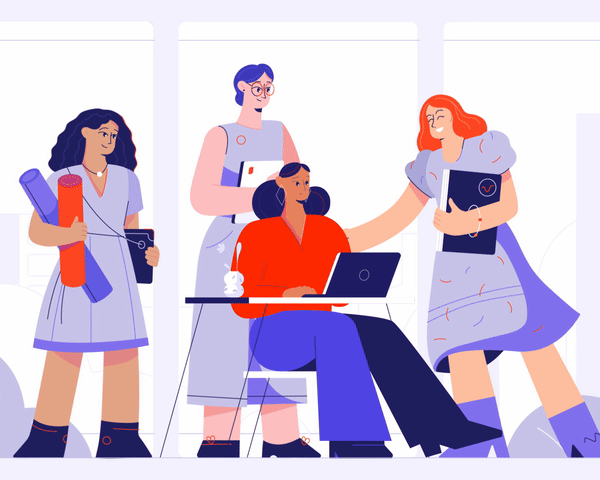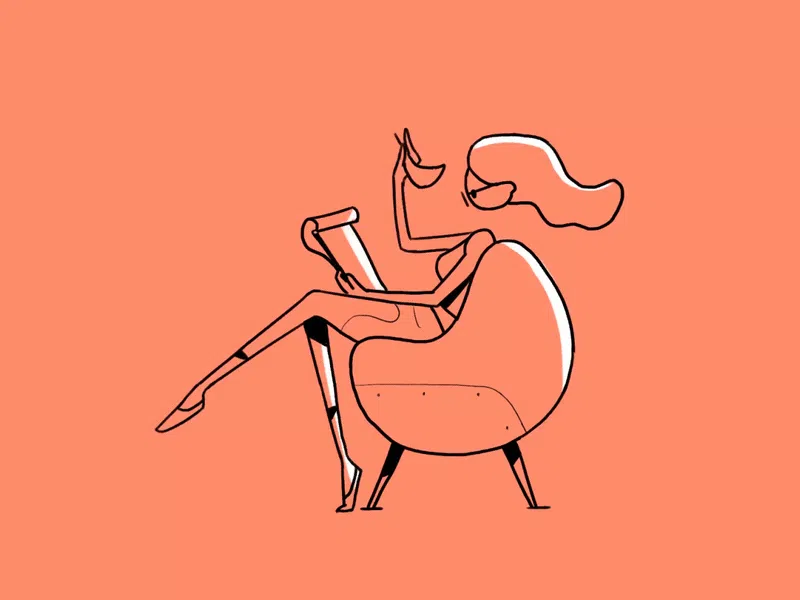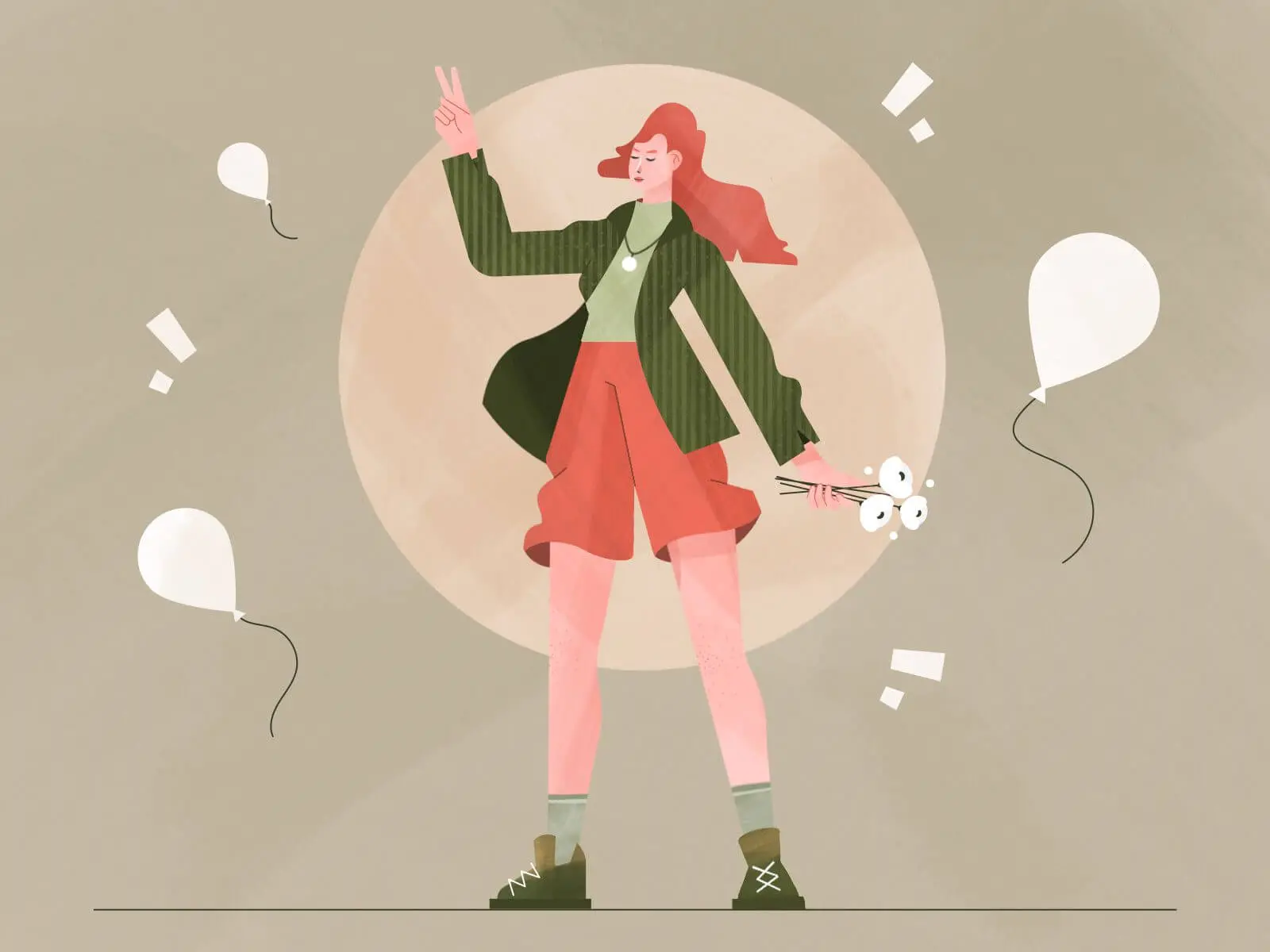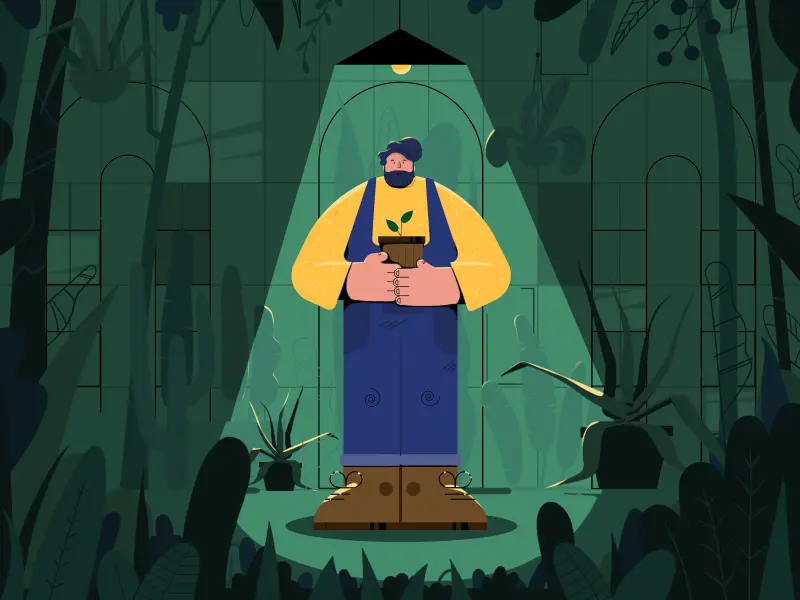Guide on 2D Animation: Everything You Need to Know
In the ever-evolving digital media landscape, 2D animation is a vibrant and versatile medium that brings stories and concepts to life. The definition of 2D animation encompasses a wide range of techniques and styles, from traditional hand-drawn frames to modern digital creations.
This article delves into the essence of 2D animation, tracing its roots from traditional methods to its current state in the modern digital age.
What Is 2D Animation?
The traditional 2d animation definition involved meticulous hand-drawing and painting of individual frames. Each frame represented a slight change from the last, creating the illusion of motion when played in sequence. This labor-intensive process required animators to possess a high degree of artistic skill and a deep understanding of movement and expression.
The advent of computer technology heralded a new era for 2D animation, transforming it from a purely manual process to one that could leverage digital tools for creation and editing. Computer animation 2D, as it’s known today, allows animators to draw directly onto digital tablets or animate pre-designed vector graphics, streamlining the production process significantly.
Digital 2D animation offers many advantages, from the ease of making edits to the ability to employ complex effects that would be challenging to achieve manually.
The evolution from cel animation (more on this later) to computer 2d animation hasn’t diminished the importance of foundational animation principles, such as timing, anticipation, squash, and stretch. Instead, it has provided artists and animators with more tools to express their creativity, making 2D animation a dynamic and ever-evolving field.

Where and Why Is 2D Animation Used?
2D is versatile and used in many areas, such as entertainment, education, and marketing. Its broad use comes from its clear messaging, emotional impact, and ability to capture imagination.
In the realm of entertainment, 2D animation breathes life into the vibrant worlds of cartoons, feature films, and video games, offering a unique storytelling canvas. Educational content benefits from 2D animation’s ability to simplify complex concepts, making learning more engaging and accessible. In marketing, animated explainer videos and commercials utilize animation 2D to highlight product features, tell brand stories, and connect with potential customers on an emotional level.
The choice of 2D animation is often driven by its nostalgic charm, artistic freedom, and cost-effectiveness compared to 3D animation. It allows for bold and stylized expressions of creative visions, making it a favored medium for artists and animators.
The Process of 2D Animation Production
Creating a 2D animated piece is an intricate process that involves several stages:
Initial Planning
The journey begins with thorough planning. This stage lays the groundwork for the animation project, involving:
- Conceptualization. Defining the core idea and message of the animation.
- Scriptwriting. Crafting the narrative that will drive the animation.
- Storyboarding. Visualizing the script in a series of sketches to outline the animation’s flow.
- Character design. Creating and refining the appearance and style of the animation’s characters.
- Backgrounds and asset creation. Designing the environments and additional elements needed for the animation.
Production
With the blueprint in hand, the project moves into the production phase, where the actual animation begins to take shape:
- Layouts. Establishing the scenes’ composition, camera angles, and character positioning.
- Animation. Bringing characters and elements to life through frame-by-frame animation.
- Texturing and coloring. Adding depth and vibrancy to the animations with textures and colors.
The production stage is labor-intensive, requiring a keen eye for detail and a deep understanding of motion and timing to ensure the animation flows smoothly and resonates with the audience.
Post-production
The final phase of the animation process involves polishing the animated piece and preparing it for the audience:
- Voice-overs and sound effects. Incorporating dialogue, music, and sound effects to enhance the storytelling and emotional impact.
- Editing and compositing. Fine-tuning the animation by adjusting timing, adding visual effects, and integrating all elements into cohesive scenes.
- Color correction and grading. Ensuring visual consistency and mood by adjusting colors and tones across the animation.
Each phase is vital in transforming ideas into captivating stories that engage and delight audiences across various platforms and industries.
Noteworthy Instances of 2D Animation
The best answer to the question “What is 2D animation?” can be conveyed through the examples. 2D animation has a rich history of iconic instances that have left an indelible mark on the industry and audiences worldwide. These instances span various genres and uses, showcasing the versatility and enduring appeal of 2D computer animation.
Classic Animated Feature Films
The world of 2D animated feature films is full of classics loved by many generations. Disney’s “Snow White and the Seven Dwarfs” was the first full-length cel-animated movie. It led to other classics like “The Lion King” and “Beauty and the Beast.” These movies combined great storytelling with beautiful 2D animation, winning people’s hearts worldwide.
Anime Masterpieces
Japanese anime has significantly shaped 2D animation. It’s famous for its detailed art, complex characters, and deep stories. Studio Ghibli, started by the famous Hayao Miyazaki, made top anime films like “Spirited Away” and “My Neighbor Totoro.” People celebrate these films for their imaginative worlds and the seamless blend of traditional and digital 2D animation techniques.
Groundbreaking TV Shows
The television industry has many hit 2D animated shows. “The Simpsons” uses satire to depict American life. It is one of the longest-running TV series and has greatly impacted the industry. “Avatar: The Last Airbender” mixes 2D animation with martial arts and deep stories. “Rick and Morty” is famous for its originality and sci-fi themes.
Educational and Explainer Videos
2D animation has become a preferred medium for explainer videos in education and marketing due to its ability to simplify complex concepts and engage viewers. Companies like Explain Ninja produce high-quality 2D animated explainer videos that help businesses communicate their messages effectively, demonstrating the practical application of animation in the corporate world.
2D Animation Types and Techniques
2D animation is diverse and offers many styles and techniques. These suit different artistic visions and project needs. The range of 2D animation styles is broad, from traditional to modern digital methods.
The Cel Technique
The cel technique is key to traditional 2D animation. It uses hand-drawn frames on clear sheets called cels. Each cel is one frame in the animation. Artists paint the cels and layer them over fixed backgrounds for the final image. This detailed process needs a new cel for every frame. It’s famous for giving animations smooth and natural movement.
Limited Edition Styles
Limited animation is a style that cuts down on frames and detailed drawings to save money. In talking or emotional scenes, it often reuses backgrounds and reduces character movements to key parts, like the mouth or eyes. This style has a distinct look and is common in TV cartoons with tight budgets and time.
Vector-Based Animation
Vector-based animation uses computer software to work with digital images of mathematical vectors, not pixels. This method makes smooth, scalable animations that keep their quality when resized. Its flexibility is popular in web animations, infographics, and interactive media.

Motion Graphics in 2D Animation
Motion graphics blend graphic design with animation to make lively, engaging visuals. This technique is common in ads, explainer videos, and title sequences. It usually animates text, shapes, and logos to share information or appealingly tell a story. Motion graphics work well for projects needing a sleek, modern look.
Cut-Out Animation Methods
Cut-out animation uses flat materials like paper, fabric, or photos to make characters and objects. Animators move and reposition these materials frame by frame to animate them. You can do this by hand or use animation software for a digital effect. Cut-out is a fun and creative option that is different from traditional cel animation.
Rotoscoping Techniques
Rotoscoping lets animators trace live-action footage frame by frame for realistic animations. In the past, they projected film onto frosted glass to trace images. Now, digital tools make rotoscoping more precise and flexible. Animators use this for lifelike movement. It works well in art and visual effects, mixing animation and live-action smoothly.
Each 2D animation type and technique has its benefits. Choose one based on your project’s needs, artistic goals, and budget.
2D vs. 3D Animation
2D and 3D video animation techniques offer unique aesthetics and storytelling capabilities, catering to different creative needs and audience preferences.
Visual Depth and Dimensionality
How does 2D animation work? 2D animation creates a flat yet stylistically versatile visual experience that can range from highly detailed and realistic to abstract and cartoonish. In contrast, 3D animation adds a third dimension — depth — offering a more lifelike and volumetric representation of characters and environments. This additional dimension allows for more dynamic camera movements, lighting effects, and a greater sense of immersion.
Production Techniques and Tools
Traditional 2D animation often involves drawing frames by hand or using computer software to simulate the hand-drawn aesthetic. Modern 2D animators utilize vector-based software to create crisp, scalable graphics. On the other hand, 3D animation relies on modeling software to construct three-dimensional characters and settings that animators can manipulate and animate within a virtual space.
Character Movement and Expression
Character animation in 2D requires a strong understanding of motion principles to convey depth and movement within the flat space. Animators must creatively use scaling, perspective, and shading to suggest three-dimensionality. In 3D animation, characters can move and rotate in all directions, allowing for more natural and complex movements. It can lead to more realistic expressions and interactions but also requires a detailed understanding of anatomy, physics, and rigging in the 3D space.
Audience Perception and Nostalgia
2D animation often carries a sense of nostalgia and warmth, reminiscent of classic cartoons and animated films that many grew up with. It can evoke a timeless, storybook quality that appeals to emotions and simplicity. Conversely, 3D animation is often associated with cutting-edge technology and realism, appealing to audiences seeking immersive and visually stunning experiences.
The choice depends on many factors. These include the project’s creative vision, budget, timeline, and intended message for the audience.
2D Animation vs. Stop-Motion
While 2D and stop-motion serve the common purpose of bringing stories to life through animation, they do so in uniquely different ways.
Fundamental Differences in Technique
Stop-motion animation involves photographing real objects or figures one frame at a time, with slight adjustments between each shot to simulate movement. These objects range from simple clay figures (claymation) to intricate puppets or everyday materials fashioned into characters and settings.
Visual Aesthetic and Audience Perception
The tactile nature of the materials used in stop-motion and the slight imperfections and textures contribute to a distinctive aesthetic often celebrated for its artisanal quality and the labor-intensive process behind it.
Production Process and Time Investment
The production of 2D animation, especially with the advent of digital tools, can be a relatively streamlined process, allowing for efficient changes and edits.
Stop-motion animation takes a lot of work and time because each frame needs physical changes. This careful, frame-by-frame work requires patience and accuracy, often slowing production.
Application and Storytelling
Stop-motion animation often finds its niche in artistic projects, short films, and certain feature films that seek to capitalize on its distinctive look and the tactile quality of storytelling.
Whether drawn on a digital canvas or meticulously crafted in a physical space, 2D animation and stop-motion are integral components of the diverse world of animated storytelling.
2D vs. 2.5D Animation
2.5D animation adds depth, creating a bridge between the flat world of 2D and the volumetric space of 3D animation.
The Emergence of 2.5D Animation
2.5D animation is a technique that adds depth to 2D graphics without fully entering the realm of 3D modeling. It is often achieved by layering 2D artwork in a three-dimensional space and moving the camera or elements within it to create the illusion of depth. 2.5D animation can also involve techniques such as parallax scrolling, where background images move by the camera slower than foreground images, enhancing the sense of depth in a scene.
2.5D animation is increasingly used in motion graphics, advertising, and interactive media creating a more engaging and visually exciting experience. It’s beneficial in projects where a 3D environment isn’t necessary, but a touch of depth can enhance the visual appeal.
Role and Responsibilities of a 2D Animator
Whether through the lens of traditional cel animation or the vast possibilities offered by computer animation, the essence of the animator’s craft remains the same: to bring stories to life through the magic of animation.
Core responsibilities of a 2D animator:
- Character design and development. It involves an intricate process of design, where every detail, from the character’s appearance to movements, contributes to their believability and connection with the audience.
- Character design and development. Designing characters is complex. Every detail must make characters seem natural and connect with the audience.
- Storyboarding. Animators start by storyboarding to visually map the story before any animation begins.
- Animation production. Through drawing or digital techniques, animators carefully produce the illusion of movement. They make sure every action is smooth.
- Visual effects and modeling. They might add special effects for depth or use vector-based modeling for sharp, scalable animations.
- Collaboration. Working with voice actors and sound designers is common. Animators match the animation to the dialogue and sounds.
- Post-production. The final step involves refining the animation. Animators use feedback to adjust timing and ensure the last piece reflects the project’s goals.
2D animators are storytellers and artists, turning concepts into captivating animated stories.
Future Landscape of 2D Animation
Looking ahead, it’s clear that technology and changing audience tastes will shape the future of 2D animation.
The Ongoing Evolution of 2D Animation
The methods and tools have evolved, with 2D animation becoming the norm, offering animators unprecedented efficiency, flexibility, and creative freedom.
Integration of Advanced Technologies
The future of 2D animation will likely see further integration of advanced technologies. Artificial intelligence and machine learning can make the animation process easier. They might do some tasks independently, but the animator will stay in charge. It could mean automatic in-betweening in digital 2D animation letting animators spend more time on creative parts like character design and storytelling.
Hybrid Animation Techniques
As the lines between different styles blur, we can expect to see more examples of 2D/3D hybrid animation that combine the charm of 2D animation with the depth and realism of 3D.
The Role of the Animator in the Digital Age
The role of the animator is also evolving in response to these changes. Modern animators must be adept in animation and character design fundamentals and use cutting-edge software and tools that facilitate 2D digital animation.
Emphasis on Storytelling and Artistic Expression
Despite technological advancements, the core of 2D animation — storytelling and artistic expression — will remain paramount. The demand for compelling narratives, relatable characters, and innovative visual styles will continue to drive the industry.
Explain Ninja Expertise in 2D Animation
Explain Ninja, a premier 2D explainer video company, stands at the forefront of digital storytelling, leveraging the timeless art of 2D animation to transform complex messages into captivating visual narratives. Our deep understanding of what 2D animation entails and cutting-edge digital 2D animation techniques allow us to create content that resonates with diverse audiences across various platforms.
We harness the power of the latest animation tools to bring our creative visions to life, ensuring that every frame, character, and scene is meticulously crafted to meet the highest quality standards. Our animators understand the nuances of character design, effect modeling, and visualization, making every project a masterpiece of 2D digital animation.
Conclusion
The landscape of 2D animation is one of constant evolution and boundless creativity. As technology improves and the need for engaging visuals grows, 2D animation becomes more critical in storytelling, marketing, education, and entertainment. With leaders like Explain Ninja, 2D animation’s future looks bright. It will bring new uses, captivate more audiences, and change storytelling in the digital world.


